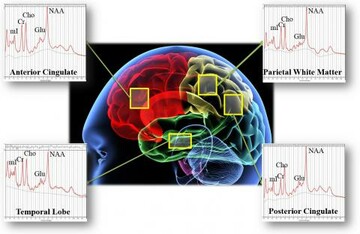A Better Way to Diagnose PTSD & TBI
CAMBRIDGE, MA – As many as 20 percent of veterans who served in Iraq and Afghanistan suffer from Post-Traumatic Stress Disorder (PTSD). Many others go undetected and do not receive care for the condition, often leading to substance abuse, less than honorable discharges, and suicide, which claims approximately 22 veterans each day. Clinicians today diagnose PTSD based on discussions with patients, but those interviews lead to subjective judgements, and it can be difficult to distinguish between the reported symptoms of PTSD and conditions like mild Traumatic Brain Injury (mTBI).
Draper is collaborating with Harvard Medical School and Brigham and Women’s Hospital to develop a more objective method of diagnosis by applying advanced signal processing and data analysis techniques to data from medical equipment to identify new biomarkers (objective signs of a medical state) for PTSD. The work, which is funded by the Pentagon’s Congressionally Directed Medical Research Programs office, could also potentially distinguish between PTSD and mTBI with civilian patients following traumatic incidents like car accidents.
“We need to accurately diagnose patients to ensure they receive the proper treatment and recommendations for return to work/play,” said John Irvine, Draper’s chief data scientist. “Our data analysis can complement clinical expertise to make objective determinations in cases where conditions may present similar symptoms, but require different treatment and rehabilitation approaches.”
The project combines Draper’s signal processing, data analysis and modeling expertise with the hospital’s proficiency in magnetic resonance spectroscopy (MRS) to examine levels of metabolites in the brain that could indicate PTSD or mTBI.
The hospital is overseeing testing with both veterans and civilian patients who have experienced trauma. Preliminary results from testing this algorithmic approach with both patient populations have advanced the state of the art for MRS processing and analysis. Analysis of test data has identified several metabolites that eventually could comprise a biomarker. The approach could be used to diagnose patients following a larger study intended to validate the initial results with a larger group of several hundred subjects that is expected to conclude by late 2016. This approach could be paired with other diagnostics under development at Draper that examine biomarkers such as heart rate, pupilometry and respiration for additional confidence in the diagnosis.
“There is a great deal of overlap between those that have brain injury and post-traumatic stress, given the likelihood of both conditions when experiencing a blast from an improvised explosive device,” said Alexander Lin, director of the Center for Clinical Spectroscopy at Brigham and Women’s Hospital and assistant professor of radiology at Harvard Medical School. “Our goal is to measure the differences in brain chemistry that will help distinguish the physical from psychological injury.”
A similar approach combining MRS with signal processing and data analytics potentially could be applied to examine other conditions, including providing an objective measurement of pain, Irvine said.
The project is part of a larger neuroscience portfolio at Draper that also includes support to a Massachusetts General Hospital-led effort to develop a deep brain stimulation device to treat PTSD as well as other conditions; a noninvasive method of brain mapping that could help treat conditions like epilepsy, bipolar disorder and depression; and implantable nerve stimulation devices that could help treat conditions such as diabetes and chronic pain.
Released May 19, 2016

